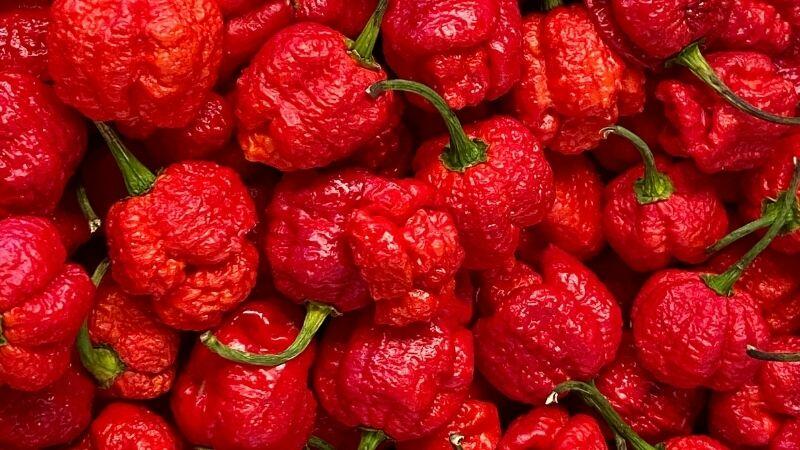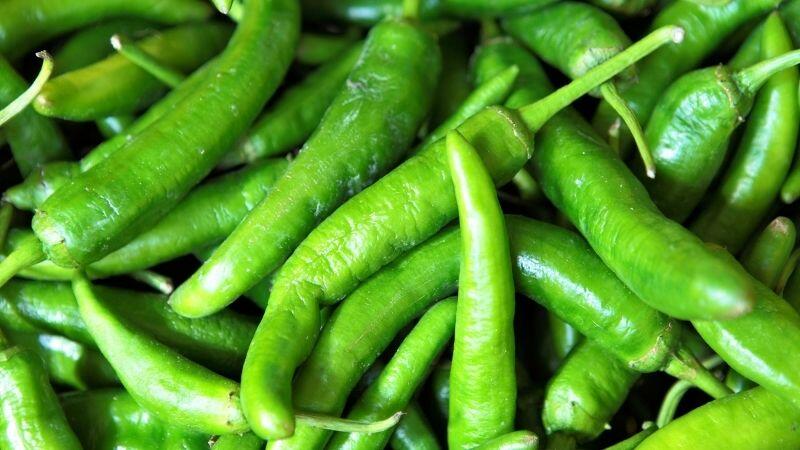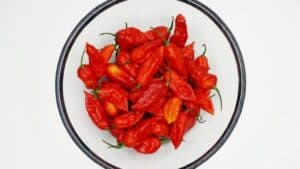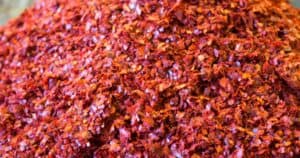As a
This is a common question for anyone enthralled by chili peppers. Many assume the smallest peppers must pack the most heat, but pepper proportions can sometimes be deceiving! Let’s explore what makes a pepper tongue-tingling.
In general, smaller peppers do tend to be hotter for a few key reasons:
- Their higher concentration of seeds and inner membranes contain more of the heat-producing compound capsaicin.
- Breeders intentionally cultivated the hottest varieties to remain petite and potent.
- Stressors like heat and drought disproportionately ramp up small peppers’
spice levels.
Tiny titans like habaneros, Thai chilies, and the Carolina Reaper illustrate how small peppers turn up the fire. Their mini size belies extreme spiciness!
However, some larger peppers can also deliver serious heat:
- Classic jalapeños and serranos may be bigger, but still scorch with afearsome punch.
- Mild when fresh, poblanos become intensified when dried into ancho chiles.
- Elongated cayenne and tabasco peppers bring fiery heat too.
So you can’t judge strictly by size – the variety and growing conditions also factor in. But generally, those miniature peppers pack more concentrated
Curious to learn more about the scientific relationship between pepper proportions and pungency? Want tips for handling petite peppers’ explosive
Smaller Peppers Have More Heat-Producing Compounds
The burning sensation we feel when eating chili peppers comes from capsaicin, the chemical compound that gives peppers their pungency and spiciness.
Capsaicin is concentrated in the ribs, seeds, and internal membranes of the pepper. Smaller peppers have a higher ratio of these capsaicin-rich inner structures compared to larger peppers with more overall flesh.
With their greater proportion of seeds and membranes, tiny peppers pack in more capsaicin relative to size. That means a bigger dose of heat!
Hot Varieties Are Often Bred Small
Another reason small peppers bring the burn is that many extra-spicy pepper breeds have been selectively cultivated to remain diminutive.
Pepper varieties evolved to contain differing levels of innate heat. The hottest cultivars like habaneros and Thai chilies have been bred to retain their petite form, keeping that power concentrated.
Meanwhile, larger bells and poblanos were bred more for flavor than
Environmental Stressors Boost Heat in Small Peppers
Not only do small peppers inherit more concentrated heat compounds through breeding, but environmental factors can also ramp up
High temperatures – Hot weather stresses peppers and causes them to produce more protective capsaicin.
Drought conditions – Lack of water triggers an increase in capsaicin production.
Low soil nutrients – Mineral deficiency stimulates hotter peppers.
These stressful conditions disproportionately affect smaller peppers, causing them to dial up their heat even more as a defense response.
Examples of Wickedly Hot Small Peppers

To illustrate how petite peppers bring mega
- Habanero – At 100,000-350,000 Scoville units, habaneros rate incendiary. Their wrinkled lantern shape is about 1-3 inches long.
- Carolina Reaper – Currently the world’s hottest pepper averaging 2.2 million Scoville units! It has a gnarled, shriveled appearance and grows to around 3 inches.
- Thai chili – These tiny 1-inch peppers register 50,000-100,000 Scoville units, giving them an intense heat.
- Pequin – At 30,000-60,000 Scoville units, these BB-sized peppers pack major punch!
Clearly good things come in small packages when it comes to spicy peppers. Remember, the tiniest ones likely have the biggest burn.
How to Control the Heat of Small Peppers
While petite peppers’ extra kick provides a thrill for chiliheads, their searing
- Remove the ribs and seeds – Concentrate capsaicin is highest here, so discard them to reduce some heat.
- Soak in salt water – Salting draws out some of the heat compounds.
- Dilute with other ingredients – Blend spicy peppers into a dish with milder ingredients.
- Hydrate with dairy – Sour cream, yogurt and milk contain casein that neutralizes capsaicin.
- Sweeten with sugar – Sugars interact with capsaicin to suppress
spice perception. - Alcohol pairs well – The ethanol in booze washes away heat sensations.
Harnessing the fire of petite peppers adds life to your cooking. With a few adjusting techniques, you can customize that spark to your desired level.
Appearances Can Be Deceiving – Some Large Peppers Bring Heat Too

While the general rule is that smaller equates to hotter for peppers, you can’t judge a pepper only by its size. Some larger varieties also pack substantial heat:
- Jalapeño – These classic peppers are 2-3 inches long, yet still reach 2,500-8,000 Scoville units.
- Serrano – Similar in size to jalapeños at 1-2 inches, serranos register 10,000-25,000 heat units.
- Poblano – These big 5-inch peppers have a mild 1,000-2,000 Scoville units but become hotter when dried as ancho chilies.
- Cayenne – Although cayennes are moderately sized at 4-10 inches long, they contain a feisty 30,000-50,000 Scoville units.
- Tabasco – Famously hot Tabasco peppers grow to 2-3 inches but reach 30,000-50,000 Scovilles.
So while tinier peppers are typically hotter, some larger cultivars can also bring respectable amounts of heat. Judge by variety, not just size.
Conclusion
While large, sweet bell peppers have their place, for white-hot chili
Understanding the special relationship between pepper proportions and piquancy allows you to pick just the right amount of firepower. Seek tiny peppers when you crave nose-running, tongue-tingling heat. Together we can enjoy the thrill of peppers in any size.





